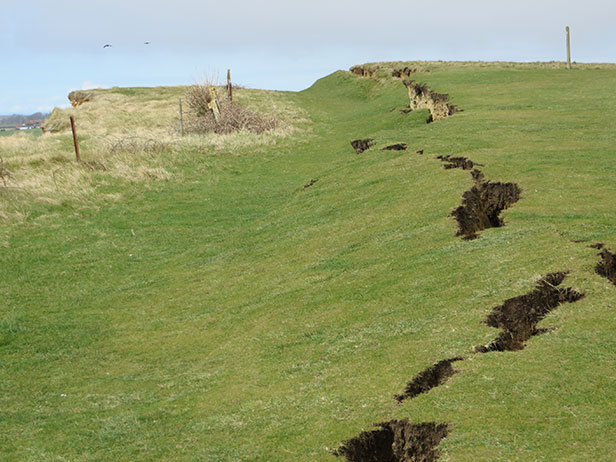
Picture courtesy of Alan Holiday, Geologist
The section of coast between Bowleaze Cove and Redcliff Point in Preston near Weymouth is currently active, with movement of around a metre since Friday (8 April).
This is a well-known area for landslips due to its geology of permeable limestone over impermeable clay. The movement has been going on for several years but this latest slip has happened quickly.
A footpath on the seaward side of the crack has been closed. The South West Coast Path is unaffected, however, as just one section is adjacent to a large crack, which is clearly visible. However, agencies will monitor the area closely for any further movement.
Dr Sam Rose, Jurassic Coast World Heritage Site team manager, said: “This is a relatively common occurrence at this location – and erosion is what our coastline is all about.
“It’s this natural process that makes the coast such a beautiful place. However, people need to be aware of their surroundings and look out for the risks.”
Erosion means that the Jurassic Coast is dynamic and always on the move, especially during or after wet and wild weather.
You should always keep your wits about you, whether you are out walking, fossil hunting, having a picnic or taking selfies. It is easy to enjoy the Jurassic Coast without putting yourself or others at risk. Don’t forget:
- Always stay away from the cliffs (top and bottom ) – landslides and rock falls are more likely to happen after heavy rainfall or storms but can, and do, happen anytime
- Mud flows may extend across the beaches – be alert; they can look deceptively like the beach itself
- Never ignore a warning sign – they are there for your safety
- Check tide times before you set off on a beach walk or fossil hunting adventure to avoid being cut off






